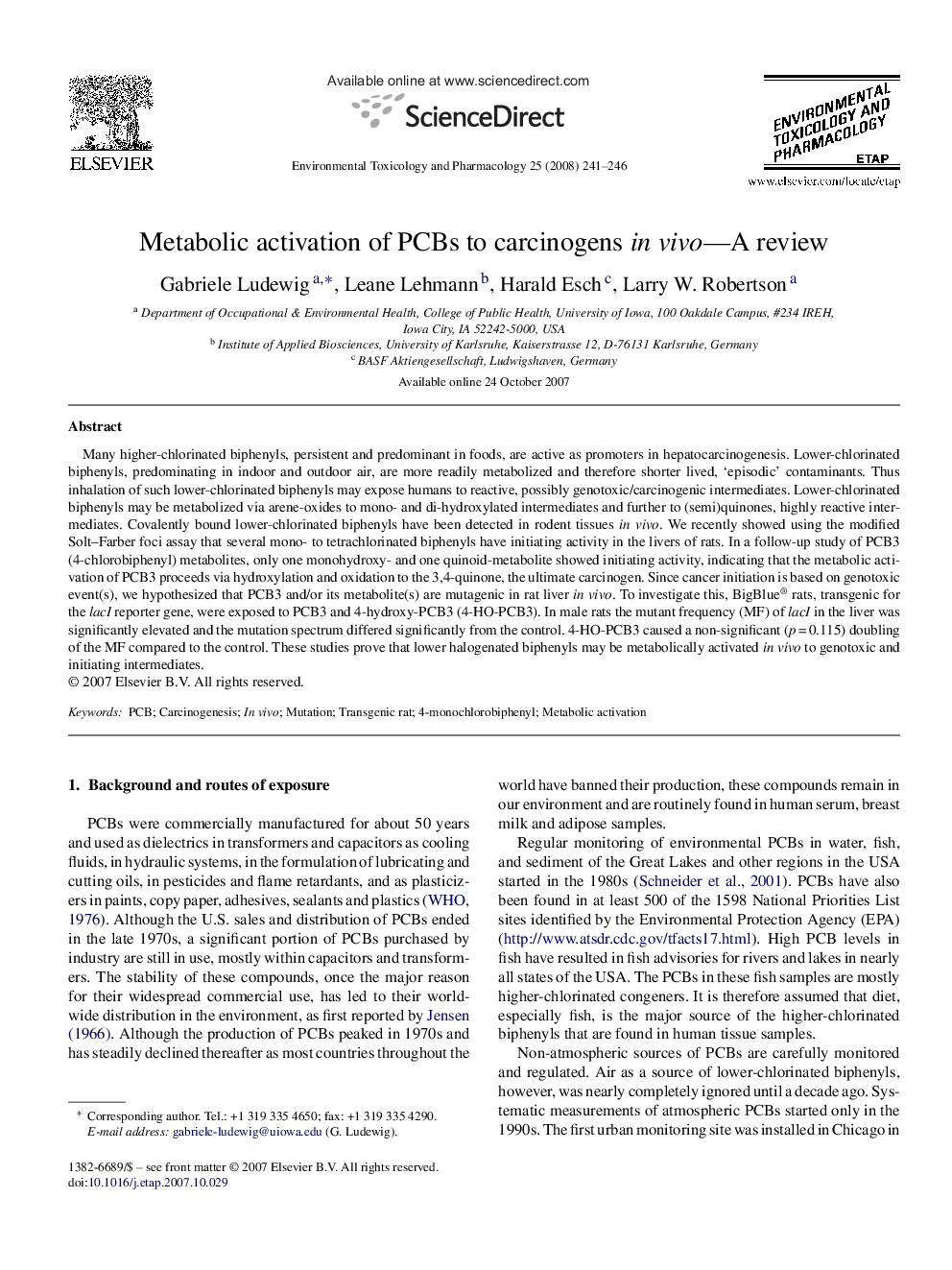| Article ID | Journal | Published Year | Pages | File Type |
|---|---|---|---|---|
| 2584400 | Environmental Toxicology and Pharmacology | 2008 | 6 Pages |
Many higher-chlorinated biphenyls, persistent and predominant in foods, are active as promoters in hepatocarcinogenesis. Lower-chlorinated biphenyls, predominating in indoor and outdoor air, are more readily metabolized and therefore shorter lived, ‘episodic’ contaminants. Thus inhalation of such lower-chlorinated biphenyls may expose humans to reactive, possibly genotoxic/carcinogenic intermediates. Lower-chlorinated biphenyls may be metabolized via arene-oxides to mono- and di-hydroxylated intermediates and further to (semi)quinones, highly reactive intermediates. Covalently bound lower-chlorinated biphenyls have been detected in rodent tissues in vivo. We recently showed using the modified Solt–Farber foci assay that several mono- to tetrachlorinated biphenyls have initiating activity in the livers of rats. In a follow-up study of PCB3 (4-chlorobiphenyl) metabolites, only one monohydroxy- and one quinoid-metabolite showed initiating activity, indicating that the metabolic activation of PCB3 proceeds via hydroxylation and oxidation to the 3,4-quinone, the ultimate carcinogen. Since cancer initiation is based on genotoxic event(s), we hypothesized that PCB3 and/or its metabolite(s) are mutagenic in rat liver in vivo. To investigate this, BigBlue® rats, transgenic for the lacI reporter gene, were exposed to PCB3 and 4-hydroxy-PCB3 (4-HO-PCB3). In male rats the mutant frequency (MF) of lacI in the liver was significantly elevated and the mutation spectrum differed significantly from the control. 4-HO-PCB3 caused a non-significant (p = 0.115) doubling of the MF compared to the control. These studies prove that lower halogenated biphenyls may be metabolically activated in vivo to genotoxic and initiating intermediates.
